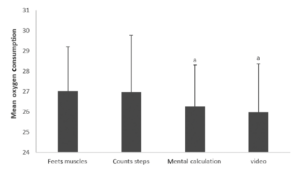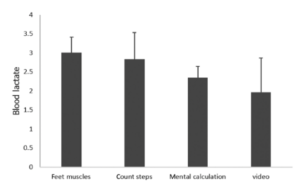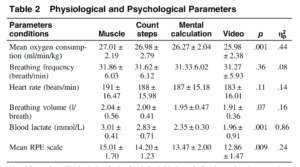Should you stay focussed or become distracted while running to improve performance?

I am a terrible runner.
To be perfectly honest I don’t even enjoy it very much.
But if there’s one thing I hate more than running, it is generally being ‘bad’ at something.
Therefore I keep running. Because I suck at running and keep thinking I can improve.
When it comes to what I occupy my mind with while running I’ve tried everything:
- When using a running coach I generally am instructed to concentrate on breathing, heart rate, or step count.
- I’ve tried listening to music to keep me motivated
- I’ve tried paying attention to nothing at all, and trying to ‘enjoy the process’ (which never works).
- I trained for a few half marathons listening entirely to audiobooks.
- Now I listen exclusively to podcasts. I guess I figure I may as well try and learn something during my self-inflicted torture.
Being a sports geek, I often wonder which strategy is best for my performance. At times I get lost in a podcast and before I know it an hour has flown by and my run has been tolerable.
Other times I am checking my Garmin every 30 seconds to ensure I keep a very specific heart rate and it can feel like the longest hour of my life.
A brand new article that is ahead of print in the always compelling (sarcastic) Journal of Motor Learning and Development provided me a very specific answer, as well as some much needed justification. The results were both fascinating and surprising.
Before getting to the article there a few concepts we need to understand.
There are generally 2 types of strategies that can be used while exercising:
- Associative Attention Strategies: This is when you focus on bodily functions or sensations (think focussing on muscle contractions, breathing etc).
- Dissociative Attention Strategies: This is when you block out all sensory perceptions by directing your attention to something distracting (think watching a movie while running).
There have been lots of studies focussed strictly on these two broad categories. To describe the conclusions of these prior studies in one sentence it would be:
Directing your attention externally away from your performance task has a positive impact on both endurance performance and economy.
The mechanism to explain this is called The constrained action hypothesis. Essentially, when you use an INTERNAL focus of attention you tend to start to try and control your movements consciously (think of cueing yourself to kick your leg further back while you run). This likely disrupts the automatic nature of your motor system which decreases motor performance.
Interestingly, expert runners tend to focus on associative strategies, while the rest of us schlubs prefer a distraction.
That’s great! Yet even within these two strategies we have countless options on how to focus our attention. So in 2014, a research paper by Brick et al built on these two categories and added 4 dimensions:
- Associative External attention: Think keeping a specific pace.
- Associative Internal attention: Think focussing on a particular muscle action
- Dissociative External attention: Think watching a sporting event or movie
- Dissociative Internal attention: Think solving a mental puzzle while you run.
The study that caught my eye was one of the first to explore the 4 strategies with a variety of data point outcomes to decide once and for all which strategy is best.
This was a small study. Too small in fact. It only included 12 participants.
Let’s take a quick aside for a quick lesson on reading headlines versus reading actual studies. I saw that The New York Times wrote about this article, calling it ‘fascinating’ (which it is), and describing it as small (which it was). BUT, the journalist still led the reader to believe the conclusions from the article were newsworthy and conclusive, even starting the article with
“To make running seem easier, try paying attention to anything other than your body. That’s according to a fascinating new study of the ways in which how we focus as we move can affect how we feel as we move.”
But, if you took the time to read the actual paper in full, you would have noticed in their statistic section that for the study to make a meaningful conclusion (in statistics you use something called a power analysis to decide this), it would require 14 study subjects. The problem is after drop-outs, they only ended up with 12. In short, no conclusions can definitively be drawn as the study was too small despite the Times Article ‘suggestions’.
The study used 12 female runners aged 18-30. The runners were classified as recreational. 31% said they exercise under 2 hours weekly, 57% exercise 2-4 hours weekly and 12% exercise 4-6 hours weekly.
For the study, participants completed something called a maximum treadmill speed test which is essentially a torture test where you start at 6km/hr on the treadmill and have your speed increased 2km/hr each minute until you can’t run anymore.
Following this the runners came back 4 straight days and would run at a velocity of their 70% max based on their speed test. The conditions for the 4 days were randomized, but each runner completed one session of each of the following:
- An associative external attention run where they were cued to count their steps.
- An associative internal focus of attention run where they were instructed to focus on the muscles in your feet.
- A Dissociative external attention run where they watched a basketball game on TV
- A dissociative internal attention run where they were asked to start at a high number and subtract three continuously, relaying their results every minute.
The researchers looked at a number of outcomes including a rating of perceived exertion scale, a gas analyzer (VO2max), a heart rate monitor, and even taking blood samples to measure lactate levels right after each run.
Likely the most important measure in running is oxygen consumption. You will notice a significant association where associative internal condition running (thinking about your foot muscles) was the worst. Dissociative external running (watching a basketball game) was the best! Essentially the more you are distracted, the better your running VO2max.

The second most important measure was blood lactate levels. This is an indirect measure of your running economy. The higher your lactate after running, the worse your economy. AGAIN, the results favor distracted running.

In fact, when you look at the study data, external dissociative running was best in essentially every measure. Notice the significant difference in heart rate, and also RPE scale where participants felt like they weren’t having to work as hard.

So what have we learned?
“Losing yourself” while exercising is ok. In fact it may help you perform better. Stop complaining about the TV being on in the gym, or thinking you are a more ‘pure runner’ because you don’t listen to music.
In fact if you want to perform better, it would appear it’s potentially a good idea (remember the study was not adequately powered) to pay attention to darn near anything other than the task at hand.
Now excuse me while I cue up some new podcast episodes for today’s run.
